col legno collage series
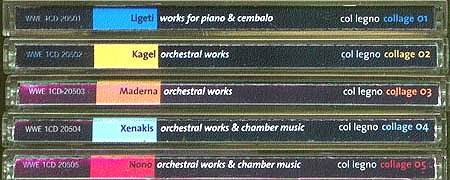
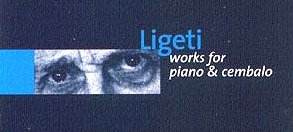
Ligeti: Études, Invention, Capriccios, Musica ricercata,
three pieces for Cembalo
 Erika Haase (piano &
harpsichord).
Erika Haase (piano &
harpsichord).
 Col legno
collage WWE 20501 62'27"
Col legno
collage WWE 20501 62'27"

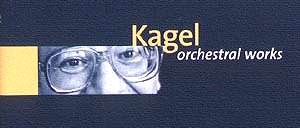
Kagel: Les idées fixes;
Music for Keyboards and Orchestra; Opus 1.1990
 RSO Saarbrucken/Mauricio Kagel.
RSO Saarbrucken/Mauricio Kagel.
 Col legno
collage WWE 20502 63'08"
Col legno
collage WWE 20502 63'08"

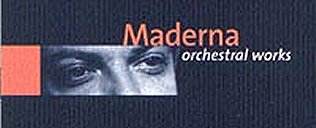
Maderna: Austrahhlung; Oboe concerto
No 1; Giardino religioso
 SWF Symphony Orch/Tamayo
etc; International Chamber Ensemble/Maderna, Lothar Faber (oboe); Netherlands
RCO/Zender
SWF Symphony Orch/Tamayo
etc; International Chamber Ensemble/Maderna, Lothar Faber (oboe); Netherlands
RCO/Zender
 Col legno
collage WWE 20503 63'33"
Col legno
collage WWE 20503 63'33"

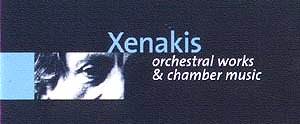
Xenakis: Ata; N'Shima; Metastaseis; loolkos;
Charisma; Jonchaies
 SWF Symphony
Orch/Gielen/Rosbaud/Ryan etc
SWF Symphony
Orch/Gielen/Rosbaud/Ryan etc
 Col legno
collage WWE 20504
[67min]
Col legno
collage WWE 20504
[67min]
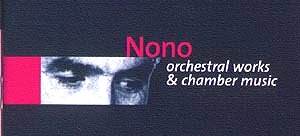
Nono: Due espressioni; Fragmente
- Stille, an Diotima; Post-Prae-Ludium
 SWF Symph.Orch/Rosbaud/Gielen.
Moscow String Quartet etc.
SWF Symph.Orch/Rosbaud/Gielen.
Moscow String Quartet etc.
 Col legno
collage WWE 20505 [62.4]
Col legno
collage WWE 20505 [62.4]

(Distributor: Discovery)
This attractive, valuable series of contemporary composer portrait CDs from
Germany has its first issues devoted to five key figures active in Europe
during the second half of the 20th century, Ligeti, Kagel, Maderna,
Xenakis and Nono. The distinctive covers each has a pair of eyes showing
through a gap. When you lift out the CD, their full faces appear - a nice
touch. The notes are rather on the brief side, but adequate. Some are studio
recordings, many others high quality live radio recordings from the 1950s
until mid-90s from contemporary music festivals in Darmstadt, Donaueschinger,
Metz, Moscow etc. All of them can be recommended as desirable and good value,
though evaluation of the music itself must depend upon personal taste.
György Ligeti, now 77, continues to be prolific, and this selection
has the first book of the growing collection of piano Études
(1985). Erika Haase, who worked on the recording with the composer, retraces
his compositional footsteps with the early Capriccios (1947) and
Invention (1948) which show him distancing himself gradually from
Bartok. The 11 ricercars (1951-53), the last a Homage to
Frescobaldi, go beyond what Hungarian orthodoxy would allow in the early
1950s and No. 10, in its wind quintet arrangement, had too many minor seconds
for inclusion in a concert - in 1956 Ligeti left his native country!
Ligeti has made a significant contribution to the new harpsichord repertoire
and Erika Haase shows herself equally adept on that instrument. His Hungarian
passacaglia leads us in deceptively gently towards its cumulative complexity;
Hungarian Rock is wild and obviously virtuosic in its demands, and
the rapid tremolos of Continuum are conceived by Ligeti as like an
illusion produced by revolving a stroboscopic disk.
Collectors will also want to consider Pierre-Laurent Aimard's recording of
Ligeti's works for piano, including the second book of the Études
and one from the third, in the new
Sony Gyorgy Ligeti Edition, SK 62308
 .
.
Mauricio Kagel, South American born, long resident in Germany, is a genial
composer, subversive and quirky, a maker of film and regular contributor
to the development of music-theatre. This collection of orchestral works
written within a few years a decade ago (1987-1990) is perhaps the first
of these CDs to try. Les idees fixes is a continuous set of five rondos
(a pity not to have indexed the single track) which takes in elements of
jazz and middle-Eastern folk music; there is plenty of virtuosity from the
orchestra, lively percussion, one rondo has an insistent A on the piano.
Colourful and rhythmic, with expectations constantly confounded. Music
for Keyboards and Orchestra integrates four pianos; Opus 1.1990
does not avoid tonality and its sound events are counterpointed with percussion,
suggesting maybe 'suspenseful film scenes'. I enjoyed it all thoroughly.
Bruno Maderna is, for me, the poet of this series. Revered by his colleagues,
an outsider in Darmstadt who counteracted the primacy there of serialism
and abstraction, his music draws on myth and his own experience of antifascist
activity. He died of cancer in 1973, aged 53, and I have a vivid memory of
a Festival Hall concert which he conducted only weeks before, with music
of his own, and Brendel playing Schoenberg's piano concerto. Maderna's music
is sensuous and evocative. There are several oboe concertos, the first of
them included here, together with Austrahhlung, a half hour work for
full orchestra with flute & oboe soli, mezzo soprano, the sung texts
in various languages from an ancient Persian anthology, and a phrase 'so
wunderbar' repeated by Maderna's own daughters. Giardino religioso
has the conductor moving around and playing various instruments, the
instrumentalists having choices 'as if taking a walk in a garden'. Nothing
to hurt here!
For an exhilarating bath in cold water, there is a generous selection of
five mature works by Iannis Xenakis (b. 1922), covering the period
1953-96. Most are loud, dissonant, and very exciting if you can take it!
Xenakis had a colourful life as resistance fighter and architect (assistant
to Le Corbusier) and a master of mathematics and computer science, used for
aesthetic objectives. N'shima (1975) for two singers and five instruments
was sketched using a computer and made a big impact, and still does so.
Metastaseis (1953) astounded with its building of dense textures with
integral glissandi, and he used similar techniques when designing for Le
Corbusier a pavilion for the 1958 World's Fair. loolkos is dominated
by clusters from the start. Jonchales is evocative of birds congregating,
with thunder, fairground drumming and calmer bells and flutes to end. Ata
for 89 instruments has high energy, Xenakis describing it as 'a displacement
of the senses'.
Luigi Nono (1924-90) is not for everyone, and indeed not for me, but
he is highly regarded and was a (posthumous) featured composer at a recent
Huddersfield Festival. . His sound world is typically fragmented, with silences
a common feature. Due espressioni has microtonal shifts within a narrow,
self imposed span of 3 semitones, long pauses between sound events 'reminiscent
of the silence after death'?! Post-Prae-Ludium is for bass tuba and
live electronics. The string quartet Fragmente - Stille, an Diotima,
which can also be heard on the Arditti String Quartet Edition
[Montaigne WM 334. 789005], treats Holderlin's
poems characteristically, with delicate nuances 'bordering on the inaudible'..
Reviewer
Peter Grahame Woolf

![]()